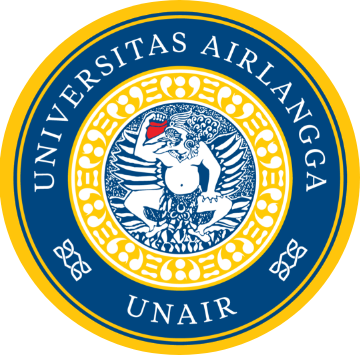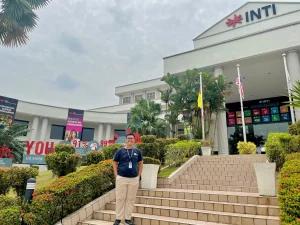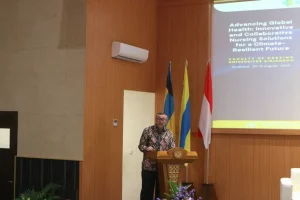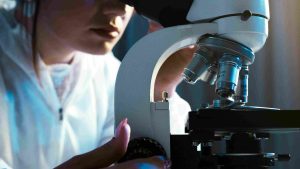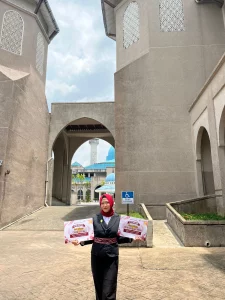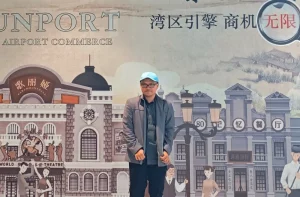UNAIR NEWS – Slaharwotan Village in Ngimbang Subdistrict, Lamongan Regency, East Java, has become a leading center for cattle farming, particularly beef cattle. With a herd of approximately 800, the village integrates agricultural and livestock operations by converting farm waste—such as corn stalks—into animal feed. This initiative is designed to improve feed efficiency while promoting the economic sustainability of local farmers.
This community service program was led by the Faculty of Veterinary Medicine (FKH) at Universitas Airlangga (UNAIR), under the leadership of Dr. Emy Koestanti Sabdoningrum, drh, MKes. The initiative was supported by a team of distinguished faculty members, including Prof. M. Anam Al Arief, drh, MP; Prof. Dr. Widya Paramita L, drh, MP; Prof. Dr. Sri Hidanah, Ir, MP; Prof. Dr. Sunaryo Hadi Warsito, drh, MP; Prof. Dr. Lilik Maslachah, drh, MKes; Lita Rahma Yustinasari, drh, MSi, PhD; Dr. Rochmah Kurnijasanti, drh, MSi; Dr. Tjuk Imam Restiadi, drh, MSi; Dr. Kadek Rachmawati, drh, MSi; along with BBK 5 students.
Training in feed processing technology
The program aimed to equip local cattle farmers with knowledge and skills in modern feed processing techniques, particularly silage production and fermentation. These technologies enable farmers to transform locally available materials—such as Pakchong grass and rice bran—into nutrient-rich feed with a longer shelf life. Expert lectures were delivered by Prof. M. Anam Al Arief, drh, MP, who discussed silage production, and Prof. Dr. Widya Paramita L, drh, MP, who elaborated on fermentation techniques.
Through a combination of educational seminars and hands-on training, farmers and students gained practical experience in feed preparation. These techniques are expected to enhance feed utilization efficiency, particularly during dry seasons when fresh forage becomes scarce. The program demonstrated a significant improvement in farmers’ understanding of effective feed management strategies.
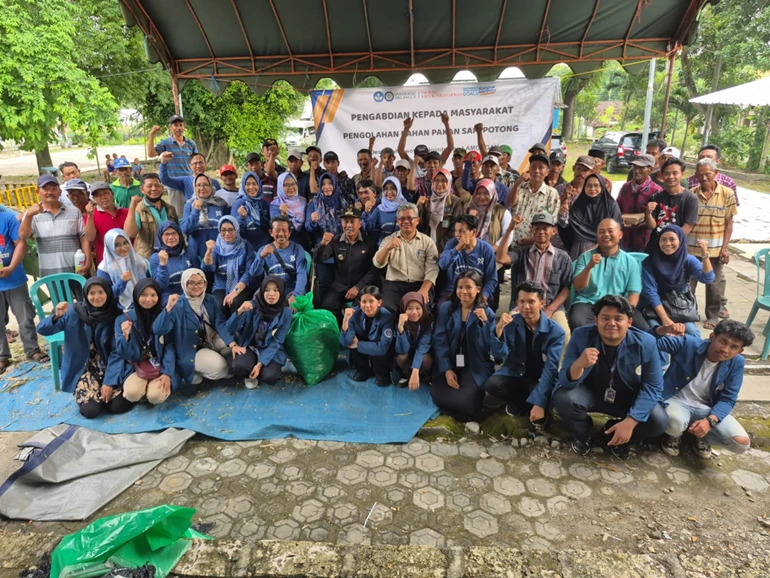
The silage produced through this initiative had a greenish-brown color and a fresh aroma, indicating high quality and nutritional integrity. Additionally, the fermentation process, incorporating agents such as Fermentor BioMC4, enhanced the feed’s nutrient content. This approach provided a practical solution for repurposing agricultural byproducts like corn stalks, which had previously been underutilized.
Beyond technical benefits, the program also had a notable economic impact. By adopting these advanced feed technologies, farmers can lower their feed expenses while increasing livestock productivity. The success of this initiative has paved the way for further development. Tri Agus Susanto, SH, the Head of Slaharwotan Village, and drh. Rahendra, Secretary of the Lamongan Department of Animal Husbandry and Veterinary Services, emphasized the importance of continued mentorship to ensure the consistent application of these innovations. Slaharwotan Village stands as a model of how collaboration between academia, technology, and local communities can drive a more competitive and sustainable livestock industry.
Author: Emy Koestanti Sabdoningrum
Editor: Yulia Rohmawati

